Konami was spread thin over the four Disney Sports titles released in 2002 for Gamecube and the two above-average titles released for the GBA in 2003, Disney Sports Motocross and Disney Sports Snowboarding. Even for companies as large as Konami and with Disney Interactive backing the series, it was simply too much to launch a franchise series of six sport titles within a year. The lack of experience and familiarity with any sport other than football / soccer showed for Konami. The lack of familiarity with an entire subculture, like skateboarding, was evident as well.

A jaded gamer would say that Konami was exploiting the license for maximum profit rather than trying to make a sincere attempt at a sports series. The work that the studio and publisher put into the games should never be forgotten or talked down, especially for how it shaped the gaming industry and Disney itself. Let's look at the facts, the published games and the concept work.
Sports games are a big part of the gaming, and entertainment industry. It was suggested in Barron's financial magazine in 2008 that 40% or more of Disney's entire value came from the ownership of sports broadcaster ESPN. There was tremendous cash flow generated by the broadcaster on a year-to-year basis. It would be foolish to overlook the importance of sporting as both a money maker and as a culture. Game publishers, like EA, have just about cornered the market on sim sport titles, owning contracts with the biggest franchises, including the NFL, NBA and FIFA. Going head-to-head with EA would be a struggle, even for Disney. Konami had an inside track however, as their Pro Evolution Soccer series was on par, if not better than any soccer sim from EA. Beginning with a solid soccer game, which was the number one sport in the world, and tying it into the Disney universe would just about guarantee that Konami would get off on the right foot.
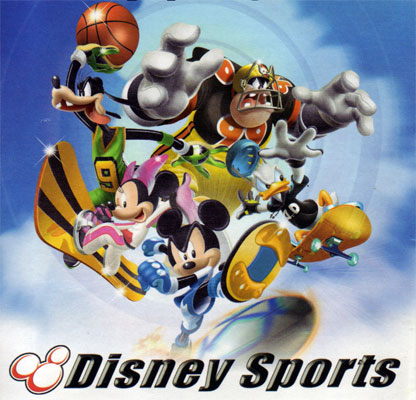
The Disney license made sense for a sports series to rival anything out of EA. Konami and Disney would find their niche in the sports world by providing an experience that was not purely sim. Combining cartoon graphics and an arcade experience would be unique to all the genres. They would be able to saturate the market with sport games that were outside of the norm and challenge the stranglehold from EA other publishers. It was a bold move but one that made tremendous sense.
The entire Disney Sports Network concept was set to be more than a gimmick featured in the opening cinema.It was going to cover the spectrum of the traditional and action sports while not being locked into a certain mode. Players would have continued to see elements like magic shoes, and impossible "cartoon physics" framing the game. Moreover the DSN world was set to be an ongoing series with sequels and different genres being tackled. Might we have seen Disney Sports Bowling, Tennis, Baseball or Hockey?
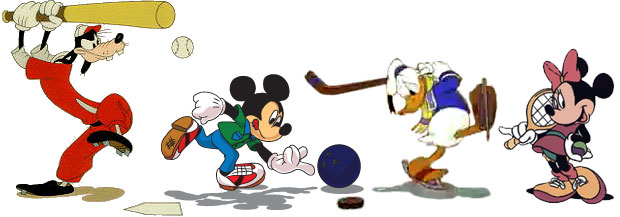
Had Konami's original series done well, and if every game in the genre had the same amount of polish and dedication of the soccer title, then that might have been the case. It would be entirely possible for Konami to have followed up with four or more Nintendo-exclusive games that were not sequels given how quickly assets were moved between the studios. Even EA was exploring the possibilities of a Disney sports franchise the same year as Konami when they published Disney Golf in 2002.
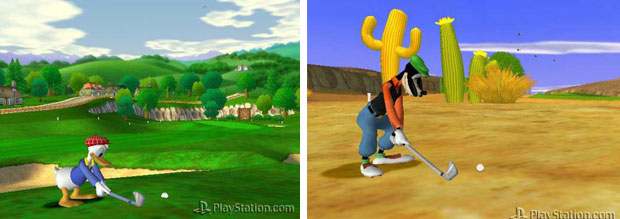
Konami and Disney made a favorable impression with editors and gamers alike early on. Unfortunately the reviews for the other titles in the series were very unfavorable and rightfully so. Players that were delighted with the soccer game struggled with unfinished and unpolished experiences in the skateboard, basketball, and football titles. Those other games killed the momentum of the soccer title and caused Konami to let the DSN concept die and the license with Disney expire. Ultimately that was a sad but understandable decision. Both Disney and Konami went wholeheartedly into the venture. Key members of Disney Interactive, as well as the Disney family including Roy Disney and the actual voice talents, lent themselves and their insight into the development of the franchise. Continuing to invest time and money on a franchise that was one of the poorest rated ever would not make much sense to either party. To understand more on how it failed from something other than a gameplay aspect we have to see how the partnership itself hamstrung the series.
The specifics of the license with Disney limited the experience. Konami was going to get exclusive use of certain characters, and only those characters for the DSN games. Konami had to build an experience around key icons and only those characters. They had to create an entire world that held the Disney flavor without stepping into other IP. The work that went into teammates, logos, costumes and especially level and stadium designs most likely originated from Konami. These things were brilliant in concept and visually breathtaking. They created a Disney feel without having anything to do with the company directly.
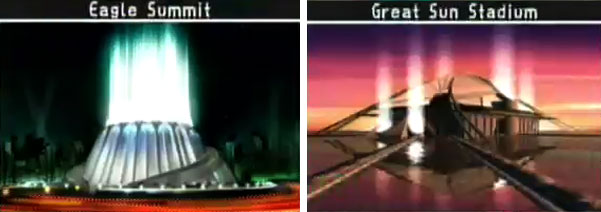
However these things were not enough to keep the franchise alive. The lack of identifiable characters, outside of the star players, was not the reason the series failed. At least not in concept. The games worked with the original supporting cast of unknown cartoon characters. Over-saturating the series with Disney characters as teammates would not have helped the games at all. Fanservice and cameos alone could not have made up for poor controls and lackluster gameplay.
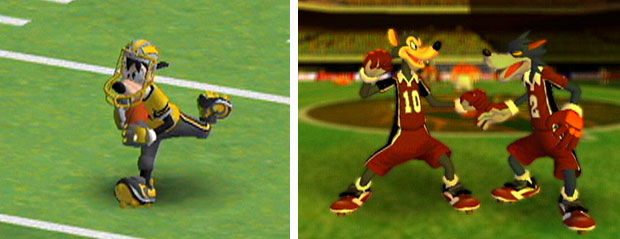
Looking back gives perspective on where the license with Disney might have been too restrictive. The vision that Konami and Disney wanted to present were in both the concept art as well as in the games themselves. The wonderful themes and game elements presented in the opening cinemas for each title, as well as several of the levels across all four Gamecube, and both Gameboy Advanced titles were ripe with potential. Presenting the ideal games however eluded the developer and publisher. The best versions of the titles would not only have had the polish in the control, features and gameplay, but they would have also incorporated elements from the theme parks as well.
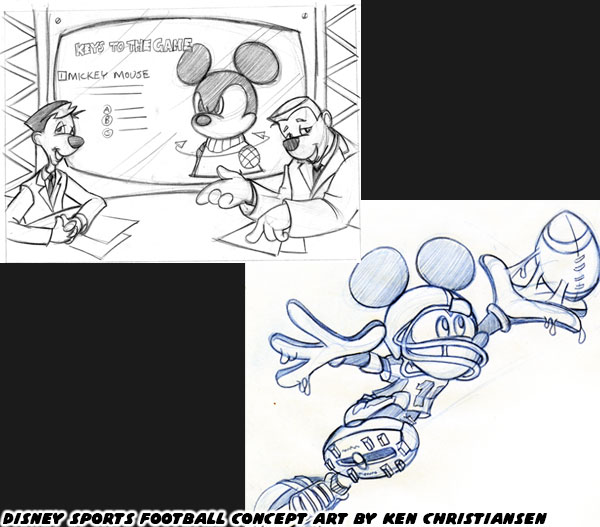
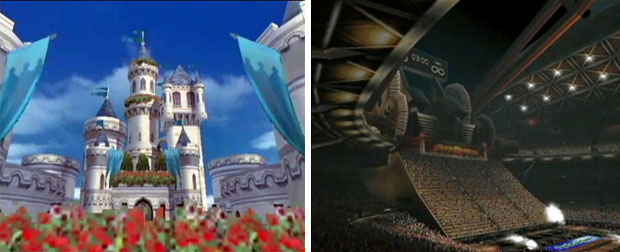
The stadium levels created by Konami were amazing for the traditional sports, they all had that special Disney Magic. This applied to the football, basketball and soccer stages. The fantasy-inspired Charmers Castle, with its towering spires, elegant banners and mix of romantic and modern elements was the home arena for the Charmer's basketball team. Instead of a bench for the team each player had a golden gothic-looking ornamental chairs and the scoreboard was built into a sculpture with gothic numbers displaying on the wall. The Steamrollers home stadium, an enormous dome had to be as large and as imposing as the home team, headlined by Pete. The field was a steel frame with gigantic visible gears turning underneath, steam would shoot up from the grates sporadically and arcs of electricity would shoot up the metal goal posts. Above the bleachers and facing the end zone was a series of gears perpetually grinding away, turning the ornamental beams across the dome. The industrial design was as awe inspiring as it was amazing.
The deficiencies in the universe were not present until the series took gamers out of the stadiums and onto the streets. It was the world presented in Disney Sports Skateboarding that demonstrated the vision that Konami wanted to present to gamers. There were many hints in concept art and in level designs for the stages themselves, unfortunately Konami could probably not incorporate these things in because the use of park assets was not in the licensing arrangement. It was painfully obvious in the Dreamland Funpark. That level took a heavy dose of Fantasyland and put it in the game, more so than even the Charmer's Castle. It was a mix of the Magic Kingdom and a Roller Coaster Kingdom without quite recreating the Disney magic. Dreamland Funpark was not the only level that "could have been."
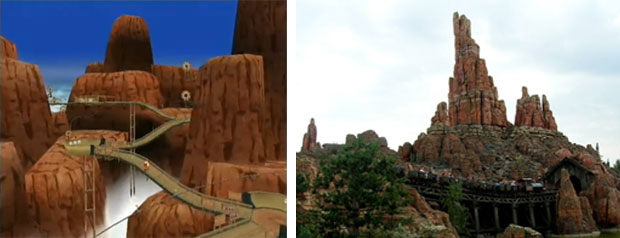
The suspended track of the Hystaria level had strong hints of the beloved Windy Valley from Sonic Adventure. As it turned out there were also major cues from the Disneyland Big Thunder Mountain railway on the level as well. Twisting, broken railways, rocky cliffs with steep drops and tunnels mixed with suspended tracks, rails and zeppelins. It was also not the only level that could have been based on an actual theme park ride. The level Moon of Iota was set out in space and had the futuristic stylings, colors and atmosphere that hinted heavily at the iconic Space Mountain.
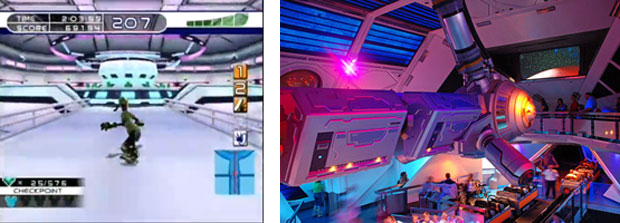
Even with the use of the iconic mouse ear balloons and an assortment of hidden Mickey's everywhere, none of these levels took direct quotes from the Disneyland attractions, however they all hinted very strongly at them. The perfect DSN license would have and should have included permission to use the elements from the theme parks. It would have grounded the Disney characters better than the pocket universe Konami had created for them. It would also have been a consolation to those wishing to see more Disney characters in the series. The use of theme park cues might have allowed designers a faster turnaround with the game and possibly would have freed up the developers to focus on control issues instead. No amount of concept art, no matter how well presented, could make up for the lack of time and focus that went into the gameplay.
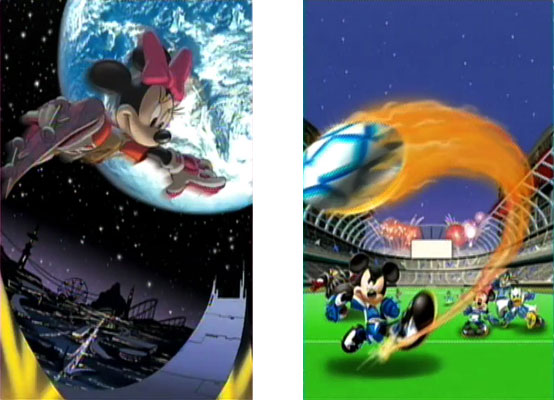
Each title needed the entire focus of Konami and not solely shared assets and voices among them. Only then would the DSN series had survived and flourished. Did the failure of the DSN series verify that there could not be any good Disney games or any good licensed games? Was this proof that Konami went into the series with too much ambition? Perhaps that is the case but to sum it up by looking at so few variables we miss the bigger picture. Konami had a profound influence on the industry thanks to the Disney Sports series and we shall highlight this in the next blog.
Did you play any game in this series? What did you think? I’d like to hear about it in the comments section. As always if you would like to sponsor me please visit my Patreon page and consider donating each month, even as little as $1 would help make better blogs and even podcasts!
No comments:
Post a Comment